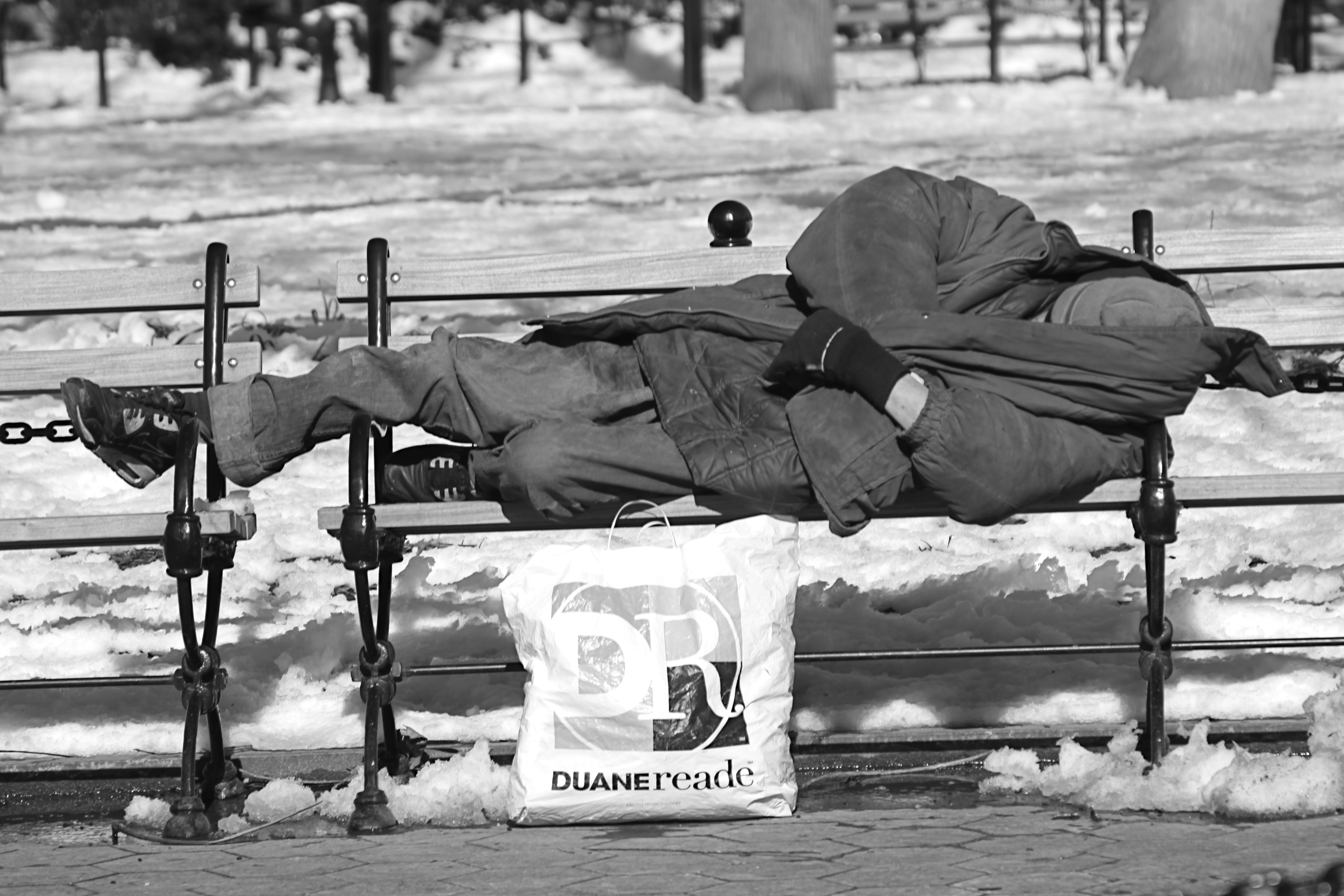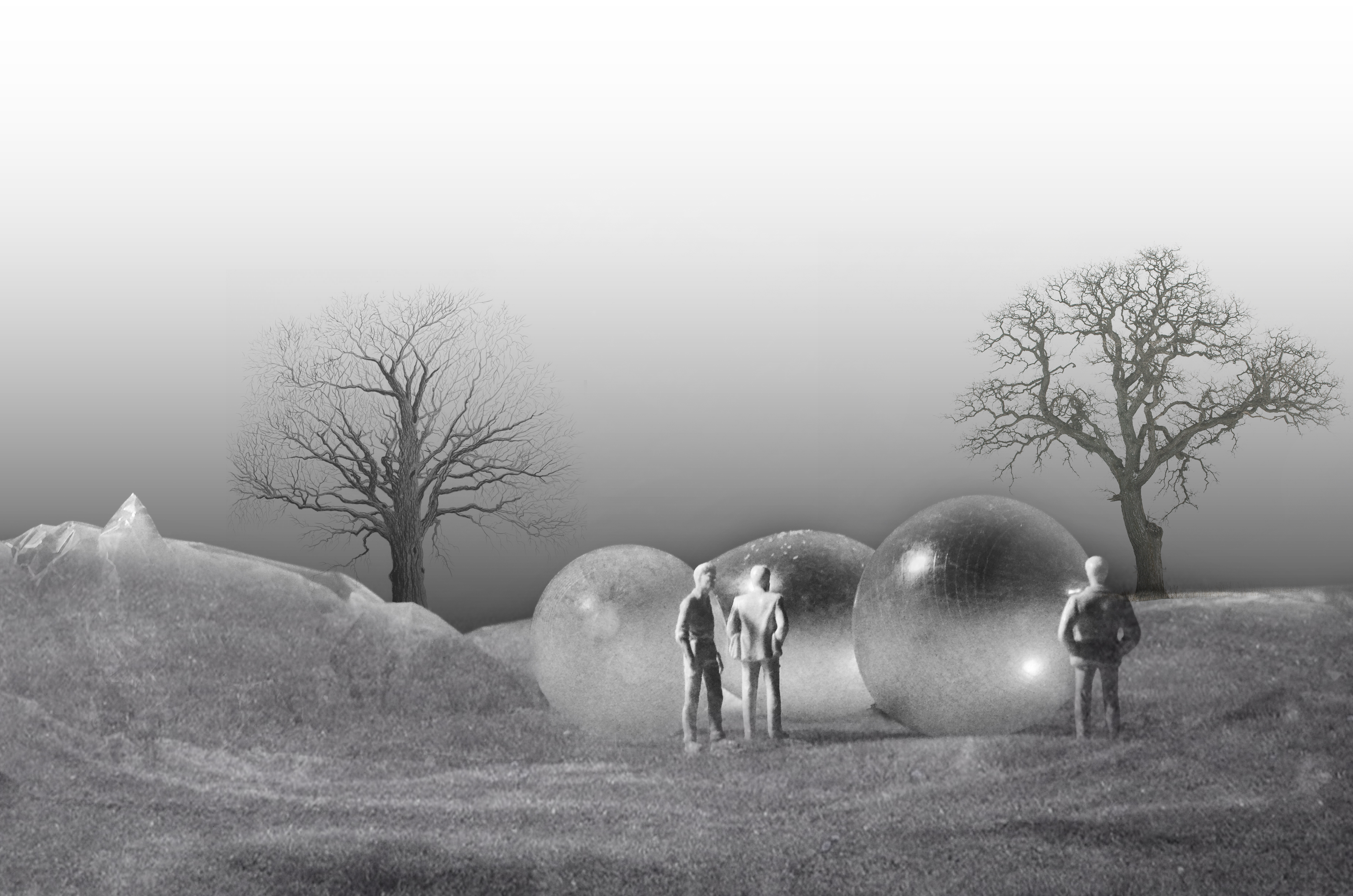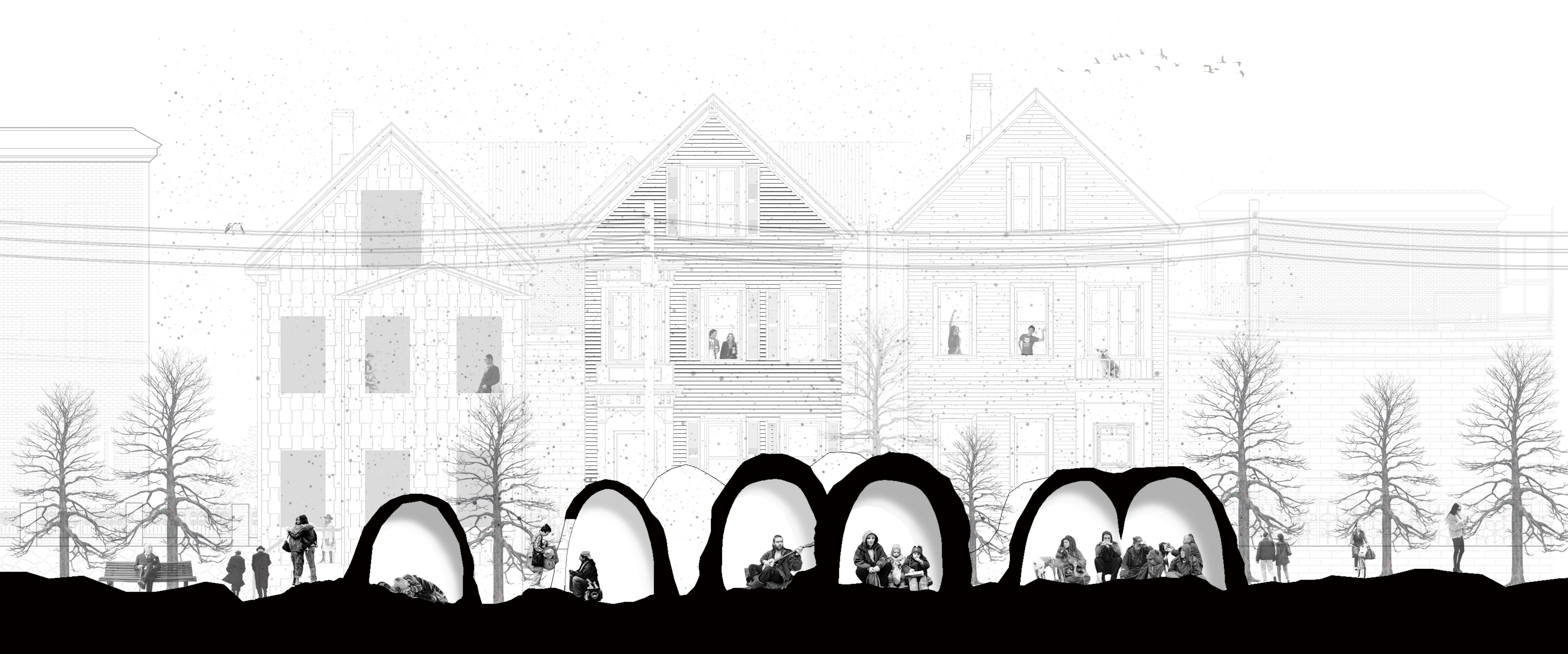


Phase 1: Install the balloons in November
Before snow's coming, we can install man-sized air balloons which would be converted into void rooms during the winter. These balloons would serve as a ‘cast’ to build a temporary house. This new way is incomparably simple and economical than any other conventional construction method.

Phase 2: Leave the balloons until they are covered with snow in December
After installation, we can just wait until the air balloon is covered with the snow. The deep drifts of snow will play a role as an insulation outer wall, which means that the more it snows, the warmer the shelter is.

Phase 3: Burst the balloon and occupy the space in December through March
Once the balloon is entirely covered with snow, people can burst the balloon, retaining a small entrance. As the balloon is blew up, empty space would be created in the snowdrift. The void space could be used as a temporary shelter for the homeless.

Phase 4 : Pick up the piece of balloons in March
As spring comes, the shelter is starting to melt and disappear naturally. By only picking the piece of balloons, we can easily clean the remains. In comparison to the traditional deconstruction method, the new way barely produces waste, and it does not require a tremendous energy for deconstruction.



SNOW BUBBLE HEAVEN
: Who is the most vulnerable people in the cold city?

